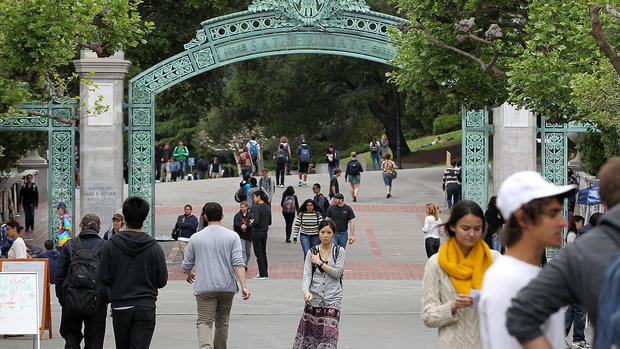11 ways to fix what ails colleges
(MoneyWatch) The higher education system desperately needs reform, but the people best suited to make the necessary fixes -- college administrators, professors and governing boards -- are often more likely to fight changes.
In a comprehensive new report, the American Enterprise Institute has laid out 11 steps that states can take to lead the charge for reform. The report suggests that ordering balky higher ed players won't work, but tying dollars to reforms can.
Here are the 11 promising potential reforms:
1. Create statewide goals for degree attainment. State policies simply asking schools to produce more college graduates won't boost grad rates, but contracts between states and public universities that include concrete targets for degree attainment can be effective. What's key is basing state funding decisions, at least in part, on student outcomes.
2. Hinge a significant portion of a school's funding on student outcomes. Schools that graduate students who don't have the basic skills to survive in a workplace aren't penalized for their failure. Funding should be tied to student outcomes, including student retention and graduate rates, and the success of disadvantaged students should be given more weight.
- Seeking solutions to the student aid mess
- Student debt burdens get government attention
- Why your child won't graduate from college in four years
3. Redesign credit transfer policies. When students transfer to other universities, they often lose credits. Students within a state should be able to transfer credits easily from one institution to another. The gold standard is a common course-numbering system that would facilitate credit transfers.
4. Collect better data on spending and revenue. Institutions of higher learning should concentrate on cost-effective operations. Perversely, administrators congratulate themselves when they increase per-pupil spending rather than shrinking it.
5. Include productivity and cost-effective measures in accountability systems. Most states have created accountability systems for public universities, but few prioritize productivity and efficiency. States should reward institutions that not only graduate more students but also spend public money wisely and boost productivity.
6. Reward schools that become more productive. States should reward institutions that have made gains in productivity. A state, for example, might give a school extra funds for instruction, allowing a cost-effective institution to serve more students.
7. Measure student learning outcomes. States should require schools to measure student learning outcomes in "rigorous, reliable and comparable ways." Institutions should be able to select the assessments they want, and they should be required to make these results public.
8. Measure graduates' labor market outcomes. States should link employment and earnings information for graduates of their schools. Prospective students and parents can then compare the wages earned by graduates in a specific major at a specific school.
9. Create charter universities. States should encourage innovation in higher education by taking a cue from the K-12 charter school model. Outside providers may offer classes as long as they meet agreed-upon goals and targets.
10. Limit barriers to outside higher ed providers. The barriers to entry in the world of colleges and universities is enormous; they are designed to keep out competition. Minnesota, for instance, initially barred Coursera from offering free online courses to residents. States should make sure that high-quality providers be allowed to conduct classes within their borders.
11. Develop new ways to provide inexpensive remedial education. More than 50 percent of community college students qualify for remediation, which hurts their chances of obtaining a degree. Schools should explore new and cheaper ways to provide remediation.

